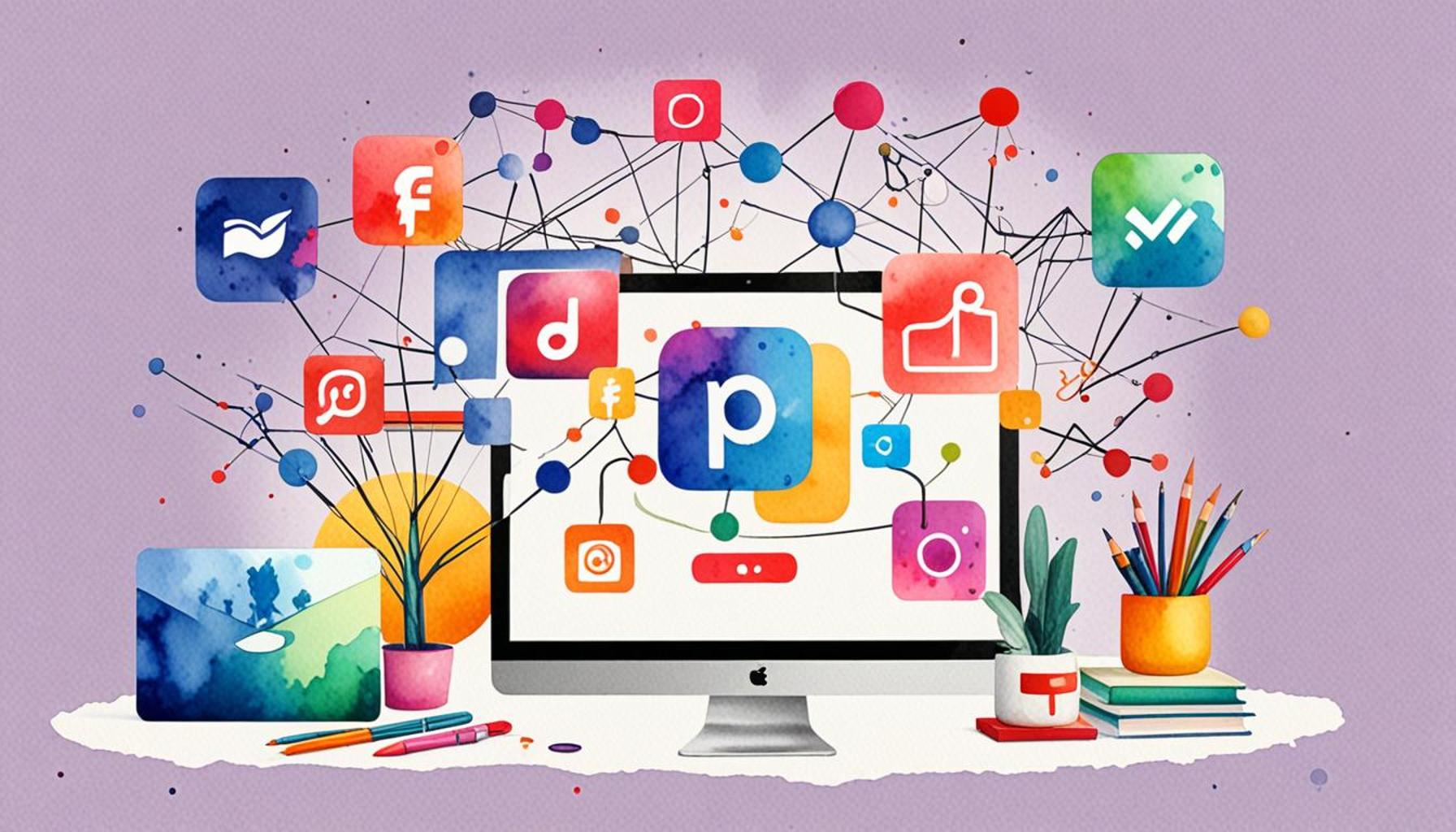The Art of Digital Archiving: How to Keep Only the Essentials

Understanding Digital Archiving
In an era characterized by the rapid expansion of digital information, the significance of effective digital archiving has escalated. Each day, billions of terabytes of data are generated globally—from emails and social media updates to critical documents and multimedia files. This deluge presents a substantial challenge in identifying which data is essential and which is merely clutter. The consequences of disorganized digital spaces extend beyond mere inconvenience; they can stifle productivity and lead to considerable time wastage when searching for crucial information. As businesses and individuals alike navigate these complexities, the need for a robust digital archiving strategy becomes urgent.
Why Digital Archiving Matters
Implementing an effective digital archiving system yields numerous benefits:
- Streamline Accessibility: By organizing files and documents rigorously, users can quickly locate necessary information without sifting through irrelevant data. For instance, a well-structured archive allows employees in a corporate setting to rapidly access project files, enhancing workflow and collaboration.
- Enhance Security: Digital archiving plays a crucial role in safeguarding sensitive information. Organizations can deploy encryption and access controls that protect critical data from unauthorized users and threats, such as cyberattacks. An example of this is the application of cloud storage solutions equipped with advanced security features to minimize the risk of data breaches.
- Boost Productivity: A tidy digital environment can significantly increase efficiency. Studies have shown that employees can waste up to 30% of their workweek looking for lost or misplaced documents. By systematically categorizing and archiving files, businesses can minimize this time loss, leading to better outcomes.
With American businesses generating vast amounts of data daily, the importance of an effective archiving system cannot be overstated. Many organizations are now embracing digital archiving methods that not only focus on preserving crucial information but also on streamlining processes by discarding redundant data.
The Principles of Keeping It Essential
Mastering digital archiving involves adhering to essential principles that promote organization:
- Prioritize Relevance: When determining what to archive, it is vital to assess which files truly align with your operational goals. This practice not only declutters your digital space but also ensures that you focus on the information that drives your success.
- Regularly Review: Establishing a consistent schedule for evaluating archived content is key. Whether it’s bi-annually or annually, taking the time to assess what remains relevant and what can be disposed of prevents archiving from becoming another source of clutter.
- Employ Technology: Leveraging advanced tools specifically designed for digital management can vastly improve the archiving process. Software solutions that automate file organization and utilize intelligent tagging can significantly reduce the workload and enhance efficiency.
As we delve deeper into the art and science of digital archiving, it becomes clear that adopting effective strategies is essential for maintaining a productive digital workspace. By focusing on the essentials, organizations can secure valuable data while eliminating the unnecessary, ultimately paving the way for increased efficiency and enhanced productivity.
DIVE DEEPER: Click here to learn more about conscious consumption
Identifying What to Keep and What to Discard
When it comes to digital archiving, the first step is understanding how to appropriately filter the immense volume of data at our disposal. One of the most effective methods for achieving this is by implementing a data categorization system. By establishing clear categories, such as “essential,” “temporary,” and “non-essential,” individuals and organizations can significantly simplify the decision-making process regarding what to retain. In doing so, you create a streamlined framework, making it easier to manage information effectively.
- Essential Data: This includes files that are critical to operational functions, compliance, historical records, and those that directly support ongoing projects. For instance, a legal firm will need to archive case files, while a healthcare provider may prioritize patient records.
- Temporary Data: These are files that have a limited shelf-life, such as draft documents or project-related materials that are no longer valuable after the completion of a task. Determining the timeline for these files helps prevent unnecessary clutter.
- Non-Essential Data: This category can contain data that, while it may have some interest, does not serve any current operational or legal necessity. Examples include outdated marketing materials, obsolete reports, or personal data unrelated to business operations.
One proven strategy for maintaining a clear distinction between these categories is to involve key stakeholders in the decision-making process. Their insights can help in determining the relevance and utility of certain files, ensuring that important items are not discarded accidentally. Additionally, educating teams about the value of effective archiving can foster a culture of organization and proactivity.
Harnessing Technology for Streamlined Archiving
In today’s world, the convergence of technology and archiving presents significant opportunities for enhancing how data is managed and preserved. Numerous advanced software solutions specialize in digital archiving, providing tools that automate the categorization of files, thereby reducing the manual burden and likelihood of error.
Some key technological features to consider include:
- AI-Powered Tagging: This feature employs artificial intelligence to analyze documents and apply relevant tags automatically. By simplifying the indexing process, users can find and retrieve files with greater ease.
- Version Control: With multiple collaborators often contributing to a single document, version control ensures that all changes are tracked. This function becomes essential in preventing the loss of critical updates and maintaining an organized archive.
- Search and Filter Capabilities: Advanced searching mechanisms allow users to quickly locate specific files based on keywords, dates, or categories. This speeds up the process of retrieval and enhances overall efficiency.
Utilizing these technological advancements does not only streamline the archiving process but actively promotes a culture of organization within an organization. As data continues to grow exponentially, leveraging technology to manage digital archives effectively will be paramount to ensuring that only the essential content remains accessible.
| Advantage | Description |
|---|---|
| Enhanced Accessibility | Digital archives allow for easy access to materials from anywhere in the world, saving time and facilitating remote collaboration. |
| Reduced Physical Space | By keeping only essential documents in digital format, physical clutter is minimized, enabling a more organized workspace. |
| Long-term Preservation | Digital archiving improves the longevity of important documents, ensuring they are preserved against natural degradation of physical materials. |
| Cost Efficiency | Maintaining digital records can be more cost-effective than keeping physical copies, lowering expenses related to storage and maintenance. |
In the realm of digital archiving, one can discover a wealth of advantages that cater to both individuals and businesses. The need for enhanced accessibility stands out as a vital component, as it eliminates geographical barriers and enables seamless collaboration. The shift toward digital formats not only streamlines access but also significantly reduces physical space requirements, creating an organized environment conducive to productivity.Moreover, a focus on long-term preservation ensures that critical documents remain safe from deterioration, a common risk inherent in traditional archiving. As an added benefit, the financial implications are often favorable; the cost efficiency of digital records can alleviate storage and maintenance expenses, making it an attractive solution for those looking to simplify their lives while retaining the essentials. Embracing these advantages is pivotal in mastering the art of digital archiving.
DISCOVER MORE: Click here to find out how to optimize your space
Establishing a Robust Archiving Protocol
A well-structured digital archiving protocol is crucial for organizations seeking to maintain only the essentials in their archives. This protocol should provide clear guidelines on what data to collect, how to categorize it, and the procedures for regularly reviewing and updating the archive. Establishing a consistent protocol not only improves efficiency but also ensures compliance with legal and regulatory mandates regarding data retention.
The development of such a protocol typically includes several core components:
- Data Retention Policies: Clearly outline the duration for which different types of data should be kept. For instance, organizations may be required to retain financial records for seven years under IRS regulations. Acknowledging and adhering to these requirements is essential to avoid penalties.
- Regular Audit Intervals: Incorporating scheduled audits enables organizations to review digital archives systematically. This is an opportunity to assess the relevance of stored files and purge those that no longer serve a purpose, thus maintaining a leaner archive.
- Documentation of Processes: Accurate documentation detailing each stage of the archiving process serves as a valuable resource for team members. This ensures continuity and ease of understanding even with personnel changes.
Organizations that successfully implement such protocols often report heightened productivity levels, as employees spend less time sifting through irrelevant data. For example, companies in the tech sector may find integrating agile methodologies into their archiving process allows them to pivot quickly in response to project shifts, keeping only the most pertinent information at hand.
The Role of Training and Awareness
Equally important is the training and awareness of team members regarding digital archiving practices. Effective archiving is not solely the responsibility of a single department—it requires a collective effort from all employees. Providing a comprehensive training program cultivates an understanding of the importance of data management and encourages best practices.
Consider providing resources such as:
- Workshops: Host regular training sessions to inform staff about the archiving tools and practices currently in place, along with their significance in maintaining operational efficiency.
- Guidelines and Checklists: Distributing easy-to-follow guidelines or checklists can serve as reminders for team members when they are storing or retrieving data.
- Feedback Mechanisms: Encourage employee input on archiving processes, allowing them to share experiences and suggest enhancements. This involvement can increase buy-in and compliance.
Moreover, fostering a culture that emphasizes the importance of keeping only the essentials can dramatically affect an organization’s digital footprint. For instance, businesses that prioritize data hygiene are less likely to succumb to cybersecurity threats, as there is less unnecessary data to manage.
Evaluating Archive Relevancy and Access
As we step further into the digital age, the relevancy and access of archived data become fundamental to operational integrity. Ensuring that archived materials remain accessible to those who need them is just as critical as what gets retained. Employing user-friendly databases or platforms can drastically improve access; however, this should be balanced with robust security measures to protect sensitive information.
Implementing a tiered access system can enhance security while determining relevancy. For example, essential data may be accessible to all employees, while sensitive data, such as personally identifiable information, requires specific clearance. Regularly evaluating access needs will help to safeguard against data breaches and maintain the integrity of the digital archive.
By focusing on these principles of archiving, organizations can develop a sustainable approach that not only conserves valuable resources but ensures that what remains in the digital archive truly supports ongoing operations and objectives. Building upon these strategies will undoubtedly foster an environment that respects the essential while minimizing excess.
DIVE DEEPER: Click here to learn more about intentional living through minimalism
Conclusion: Embracing the Essentials in Digital Archiving
In the ever-evolving landscape of information management, mastering digital archiving is not just a tactical advantage but a necessity for organizations aiming to thrive. By prioritizing essential data, companies can streamline their operations, bolster compliance, and enhance cybersecurity measures. As discussed, establishing a coherent archiving protocol is essential, but it is equally vital for organizations to focus on ongoing training and awareness among team members. When staff understand the importance of effective archiving, the entire organization benefits.
Moreover, regularly evaluating the relevancy and access of archived materials ensures that the digital toolkit remains vibrant and responsive to real-time needs. By implementing a tiered access system, organizations can strike a balance between accessibility and security, fostering a culture that prioritizes data hygiene. Such a proactive approach not only protects valuable assets but also encourages a strategic method for retaining only necessary information.
Ultimately, organizations that embrace the art of digital archiving will discover a wealth of benefits. A well-maintained archive not only eliminates clutter but also empowers employees to retrieve and utilize information with unprecedented efficiency. In today’s fast-paced digital environment, those who adapt and refine their archiving practices will find their capabilities greatly enhanced, paving the way for innovation and success. Moving forward, it is time to reimagine data management practices, ensuring that they reflect the demand for clarity, security, and essentiality.


